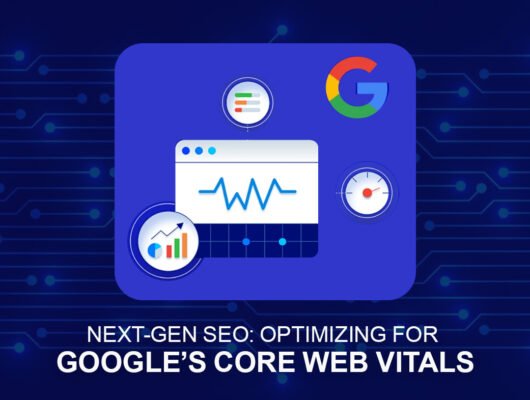Introduction to Video Marketing
Video marketing is a strategic approach that involves creating and sharing videos to promote a brand, product, or service. This form of content marketing has gained significant traction over recent years, emerging as a highly effective way to engage and retain customers. A pivotal factor contributing to the rise of video marketing is its ability to convey complex messages in a digestible format, making it more appealing to a wide audience than traditional text or image-based content.
The shift towards video is evident in consumer behavior; studies show that viewers retain 95% of a message when they watch it in a video format, compared to 10% when reading it in text. Furthermore, incorporating videos into marketing strategies can lead to a 66% increase in qualified leads and can boost website traffic significantly. With these compelling statistics, it is clear that video marketing is not just a trend but a necessity for businesses aiming to stay competitive in the digital landscape.
Platforms such as YouTube, TikTok, Facebook, and Instagram have solidified their place as essential mediums for video marketing, providing brands with the tools to showcase their story creatively. According to recent data, over 85% of businesses utilize video as a marketing tool, and this number is expected to grow as more companies recognize the potential of video to drive engagement and conversion rates. The versatility of video content allows brands to tailor their messages to specific audience segments, making it an increasingly attractive option for marketers around the world.
The Evolution of Video Content
The journey of video content has undergone significant transformations since its inception. Initially, video was predominantly confined to television, which provided structured programming and schedules. This system limited viewer choices and reinforced a passive consumption model. However, the advent of the internet in the late 20th century began to change the landscape dramatically, marking the first pivotal shift in video content consumption.
With the introduction of streaming platforms in the early 2000s, viewers gained unprecedented access to a vast array of video content. Services like YouTube revolutionized how people consumed media, allowing them to select what to watch and when. This democratization of content marked a significant transition, empowering individuals to create and share their videos with a global audience. The rise of user-generated content has greatly influenced video consumption patterns, leading brands to pivot toward more authentic and relatable content strategies.
Mobile technology further accelerated the evolution of video content. The proliferation of smartphones has made it possible for users to consume and create videos anywhere, anytime. This shift has not only expanded the audience for video content but also altered the types of videos produced. Shorter, attention-grabbing formats have emerged, while live streaming capabilities have brought immediacy and interactivity into the mix.
The overall impact of these changes has been profound, with organizations adapting to an era where audience engagement is paramount. Brands now focus on crafting compelling narratives to capture viewer interest in a crowded market. Additionally, analytics tools enable creators to refine their strategies based on viewer preferences, thus continuously evolving video content’s role in marketing and communication. As we look to the future, it is clear that video will remain at the forefront of digital content evolution, shaped by technological advances and audience demands.
Why Video Marketing Works
Video marketing has emerged as a powerful tool in the digital landscape, largely due to its ability to engage audiences in ways that other forms of content often cannot. One fundamental reason behind the effectiveness of video marketing lies in its inherently dynamic nature. Videos combine visuals, audio, and often text to create a multi-sensory experience that captures and retains viewer attention more effectively than static formats, such as images or text alone.
According to numerous studies, video content tends to generate higher engagement rates compared to other media. Viewers are more likely to interact with video content, whether through shares, comments, or likes. This active engagement is crucial, as it fosters a community around brands and encourages discussions that further promote awareness. Furthermore, video has been shown to enhance viewer retention significantly; people are more likely to remember information presented in a video format compared to text. This can be attributed to the combination of storytelling, visuals, and emotion that evoke a stronger cognitive response.
Emotional storytelling is another key principle behind the success of video marketing. Videos that evoke emotional responses, whether through humor, nostalgia, or empathy, tend to create stronger connections with audiences. This emotional engagement can lead to increased brand loyalty and advocacy. Visual storytelling also plays an essential role in how consumers perceive and interpret messages. The human brain processes video content approximately 60,000 times faster than text, allowing messages to be absorbed more quickly and effectively.
As a result, businesses utilizing video marketing can communicate their brand narratives and core messages more powerfully, leading to more effective brand positioning in a competitive marketplace. With the combination of high engagement rates, strong viewer retention, and the emotional pull of storytelling, it is clear why video marketing is increasingly being recognized as an essential component of modern marketing strategies.
Current Trends in Video Marketing
In recent years, the video marketing landscape has experienced significant transformations, driven by advancements in technology and shifts in consumer preferences. One of the most prominent trends is the rise of live streaming. This format allows brands to engage with their audiences in real-time, fostering a sense of community and authenticity. Platforms such as Instagram Live, Facebook Live, and YouTube Live have become essential tools for businesses aiming to showcase product launches, behind-the-scenes content, and interactive Q&A sessions.
Another notable trend is the emergence of shoppable videos. This innovative approach integrates e-commerce capabilities within video content, enabling viewers to make purchases directly from the video itself. This seamless shopping experience enhances consumer convenience and drives conversion rates, making it an attractive option for brands looking to enhance their digital marketing strategies.
Additionally, short-form content has gained immense popularity, particularly through platforms like TikTok and Instagram Reels. These bite-sized videos cater to the decreasing attention spans of users, allowing brands to deliver impactful messages quickly and creatively. As more businesses adapt to these trends, there is a growing emphasis on crafting dynamic and engaging content that resonates with audiences across various demographics.
Furthermore, the adoption of virtual reality (VR) and 360-degree videos provides brands with unique opportunities to create immersive experiences for consumers. By allowing viewers to explore products or environments interactively, this type of content enhances engagement and captivates audiences in ways traditional videos cannot achieve.
Finally, personalized video experiences are increasingly becoming a key trend in video marketing. By leveraging data to tailor content specifically to individual consumers, brands can foster a deeper connection and enhance viewer loyalty. As these trends continue to evolve, businesses must remain agile and innovative to capitalize on the favorable landscape of video marketing.
Challenges in Video Marketing
As businesses increasingly incorporate video marketing into their strategies, several challenges arise that can impede their effectiveness. Understanding these obstacles is essential for organizations aiming to leverage video as a key component in their marketing efforts.
One of the primary challenges is the production costs associated with creating high-quality video content. Investing in professional-grade equipment, hiring skilled videographers, and engaging editors can be financially straining, especially for smaller businesses. To address this issue, companies can explore cost-effective alternatives, such as leveraging smartphones for filming or utilizing free or low-cost editing software. Additionally, incorporating user-generated content can serve as a practical solution, as customers often create engaging videos that promote the brand.
Time constraints also present a significant hurdle in video marketing. Crafting a compelling video requires planning, scripting, shooting, and editing, all of which demand considerable time investment. For businesses with limited resources, this can lead to delays in content rollout. However, adopting a streamlined approach that includes detailed planning and utilizing templates can expedite the video production process. Moreover, creating shorter, more frequent videos can help maintain audience engagement without overwhelming the production team.
Another challenge lies in the technology barriers that some businesses encounter. Not all organizations possess the technical knowledge required to effectively produce and distribute video content. To mitigate this issue, companies can invest in training for their staff or partner with video marketing agencies that offer expertise in the field. Furthermore, a clear understanding of the various platforms used for video distribution is essential to ensure that content reaches the intended audience.
Finally, ensuring effective content distribution can be difficult amidst the myriad of channels available. Businesses must identify which platforms their target audience frequents and tailor their video marketing strategies accordingly. By addressing these challenges, organizations can unlock the potential of video marketing and drive better engagement and conversion rates.
Best Practices for Video Marketing Success
In the rapidly evolving digital landscape, effective video marketing requires a thoughtful approach to ensure campaigns resonate with the target audience. To achieve success, it is essential to begin with thorough planning. This involves identifying the objectives of the video campaign, understanding the audience demographics, and aligning the content with overall marketing goals. By having a clear vision from the outset, marketers can create focused content that effectively engages viewers.
Crafting a compelling narrative is crucial in capturing and maintaining audience attention. A successful video should tell a story that not only showcases products or services but also connects emotionally with viewers. This can be achieved by highlighting customer testimonials, creating relatable scenarios, and presenting challenges that the audience may face, followed by solutions offered by the brand. A well-structured story can significantly enhance viewer retention and foster brand loyalty.
Another key element is optimizing videos for search engines, commonly known as SEO for video. This involves using appropriate keywords in the title, description, and tags to improve visibility on platforms such as YouTube and social media. Additionally, creating engaging thumbnails and ensuring that videos are mobile-friendly can enhance the overall viewing experience, broadening the audience reach.
Selecting the right platforms for video distribution is essential. Each social media platform has its unique audience and format. An understanding of where the target demographic spends their time will guide marketers in choosing the platforms that will yield the highest engagement rates. Moreover, cross-promoting content across multiple channels can maximize exposure and attract diverse audience segments.
Finally, measuring the success of video marketing campaigns through analytics is crucial for ongoing improvement. Key performance indicators such as view count, engagement rate, and conversion metrics provide valuable insights into audience behavior and preferences. By periodically reviewing these metrics, marketers can adjust strategies to enhance future campaigns, thus ensuring continuous growth in their video marketing endeavors.
Case Studies: Successful Video Marketing Campaigns
Video marketing has proven to be a powerful tool for brands looking to engage audiences and drive results. By examining successful video marketing campaigns, we can gain insights into best practices and strategies that yield positive outcomes. The following case studies showcase how various companies have effectively utilized video to achieve their goals.
One notable example is the Share a Coke campaign launched by Coca-Cola. The objective was to create a personalized experience for consumers by replacing the iconic Coca-Cola logo on bottles with popular names. The execution involved releasing a series of engaging videos on social media, featuring people searching for their names, sharing their personalized bottles, and connecting with friends. This campaign resulted in a 7% increase in sales and a significant boost in consumer engagement. The key takeaway here is the power of personalization in video marketing, as it fosters stronger emotional connections between the brand and its audience.
Another exemplary campaign is Always’ #LikeAGirl initiative. Aimed at empowering young girls, the campaign sought to challenge stereotypes associated with the phrase “like a girl.” The video featured real-life interviews and demonstrations that highlighted the impact of societal perceptions on self-esteem. The campaign resonated deeply with viewers, garnering over 85 million views on YouTube and sparking conversations around gender equality. The core lesson from this case study is the importance of aligning video content with social issues that matter to the target audience, as this can drive both brand visibility and social impact.
Finally, BuzzFeed’s Tasty brand effectively utilized short recipe videos to engage viewers on social media platforms. The objective was to create shareable content that showcased quick, easy cooking techniques. The execution involved presenting visually appealing, fast-paced videos that made cooking seem approachable and enjoyable. Tasty’s videos have amassed billions of views, proving the effectiveness of bite-sized, informative content in online environments. The key takeaway here is that brevity and visual appeal can significantly enhance viewer retention and engagement in video marketing.
These case studies exemplify the diverse approaches brands can take in their video marketing campaigns. By understanding the objectives, execution methods, and results, marketers can glean valuable insights that inform their future strategies.
The Future of Video Marketing
As we venture deeper into the digital age, the landscape of video marketing is poised for substantial transformation. Emerging technologies such as artificial intelligence (AI) and automation are expected to play pivotal roles in shaping the future of this dynamic field. With AI-driven tools, marketers can swiftly analyze vast amounts of consumer data to tailor video content that resonates with target audiences. This level of personalization enhances user engagement, making videos more effective in capturing viewer attention.
Additionally, the evolution of video formats is likely to reflect consumers’ changing preferences. For instance, the rise of short-form videos, popularized by platforms like TikTok, indicates a shift toward more concise, snackable content. As audiences increasingly favor bite-sized videos that deliver quick insights, marketers must adapt their strategies to meet these demands. Live streaming is also anticipated to grow, offering brands the opportunity to foster real-time engagement and authenticity.
Consumer behavior is in perpetual flux, driven by technological advancements and shifting cultural norms. As mobile usage continues to dominate, video marketing will increasingly cater to users on-the-go. Marketers will have to ensure that their video content is optimized for various device types, providing seamless experiences across smartphones, tablets, and desktops.
Furthermore, the integration of augmented reality (AR) within video marketing strategies is set to revolutionize user experience. By incorporating AR elements, brands can create interactive and immersive campaigns that captivate audiences and foster stronger connections. This not only enhances brand recall but also opens new avenues for consumer engagement that were previously unexplored.
In conclusion, the future of video marketing is bright, fueled by technological innovations and evolving consumer preferences. By embracing AI, adapting to new formats, and leveraging AR, marketers can stay ahead of the curve, ensuring that their video strategies remain relevant and impactful in an ever-changing digital landscape.
Conclusion
In summary, the rise of video marketing represents a significant evolution in the landscape of content creation and consumption. As discussed, video content has become a critical element for businesses aiming to enhance their engagement with audiences. The preference for video as a format stems from its ability to convey information swiftly and effectively, catering to an audience increasingly accustomed to consuming content in this dynamic form.
The insights shared throughout this discussion illuminate the multifaceted benefits of incorporating video into a marketing strategy. Primarily, video marketing enhances brand visibility and recognition, allowing businesses to tell their stories in an engaging manner. With statistics indicating that videos can increase retention and recall rates, it becomes apparent how video marketing serves not only promotional purposes but also strengthens the connection between brands and consumers.
Moreover, businesses that leverage video marketing techniques can experience enhanced search engine optimization (SEO) outcomes. Integrating videos into website content and social media platforms improves visibility and drives traffic, contributing to better rankings on search engine results pages. As such, organizations that fail to adopt this strategy may find themselves at a competitive disadvantage in an increasingly digital marketplace.
To remain relevant and foster noteworthy connections with target audiences, it is essential for businesses to embrace the potential of video marketing. As consumers continue to gravitate towards visual content, investing in high-quality video production and strategic dissemination will be pivotal. Thus, forward-thinking companies should prioritize the integration of video content into their marketing framework to ensure they thrive in the content landscape of tomorrow.







